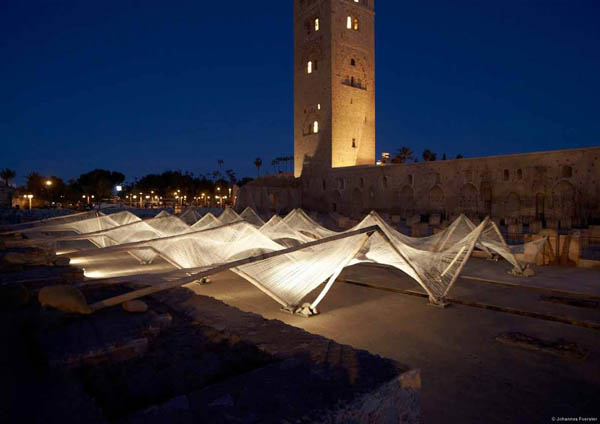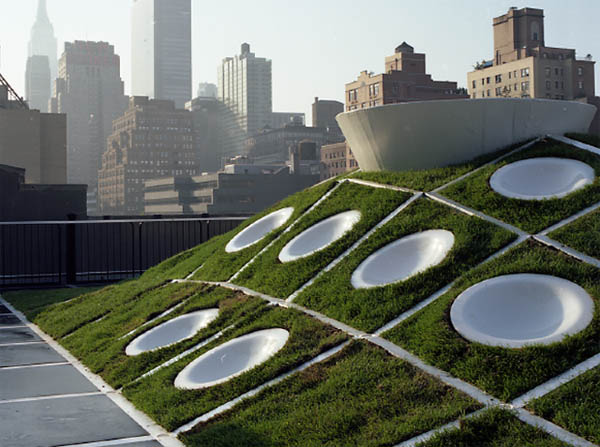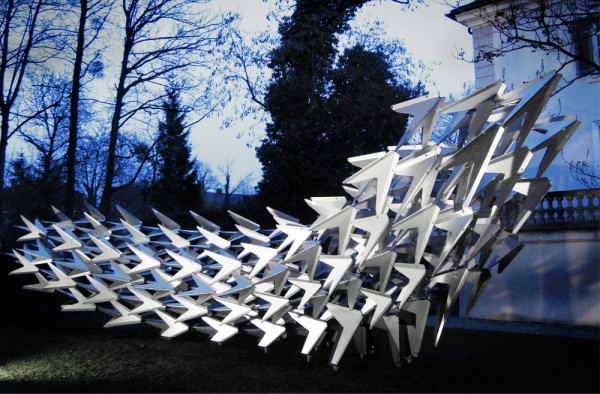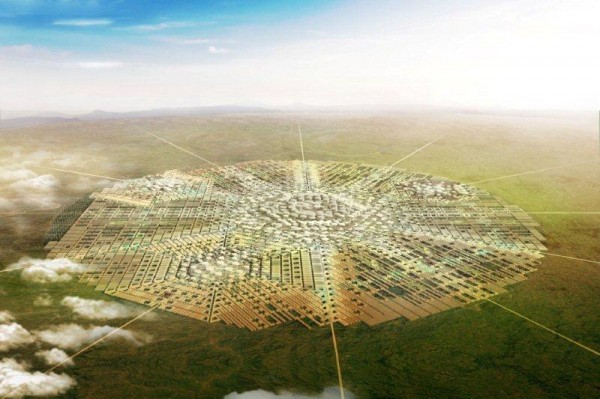Attempting to assume a fresh approach to digital fabrication, the project combines indigenous, traditional craft techniques of Marrakech with current algorithm software programming. Traditional Moroccan weaving techniques are used to render physical the forms designed in programs such as Rhino and Grasshopper. The process is, as the architects state, a nonlinear one, going back and forth between the physical and the digital.
The Moroccan weaving technique involves a wood frame loom and a process of organizing wool or cotton yarn into an array of linear lines of yarn warped through a loom weaving and tying in order to produce a woven fabric surface. The frame of the loom is recognized as a deployable architectural element, holding the yarn in place as a series of parallel lines that form a surface. These surfaces are actually three-dimensional volumes stretched over a series of fixed frames. The ultimate site for our work, the ruin at the Mosque Koutoubia, informs and locates the proposed project and establishes a scale for the work. Read the rest of this entry »























